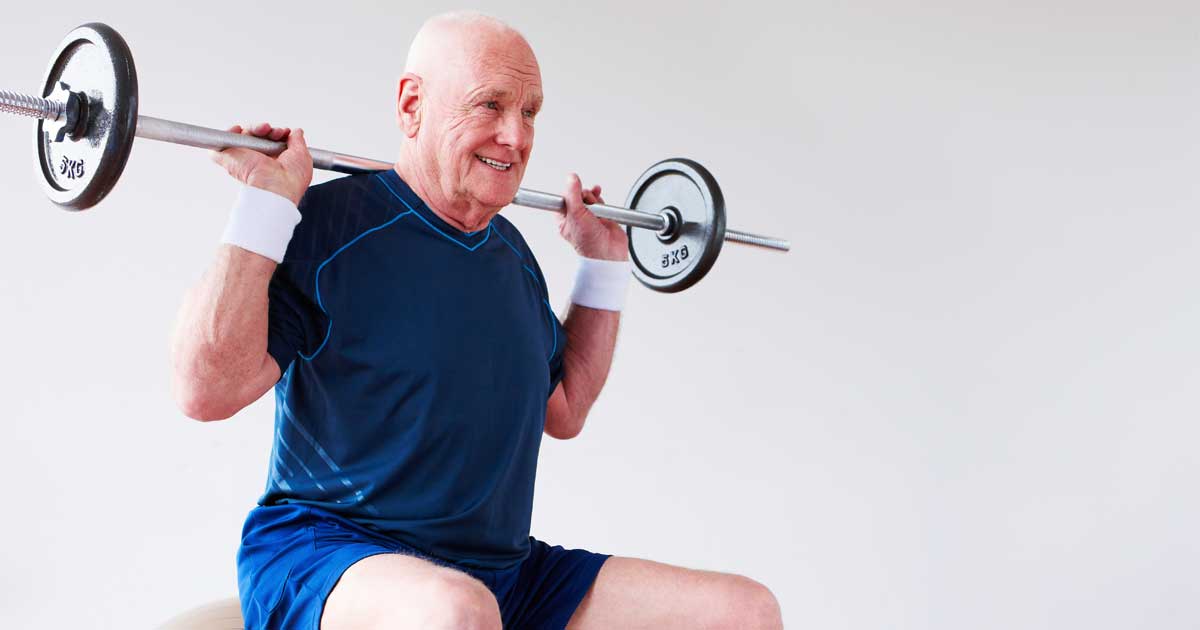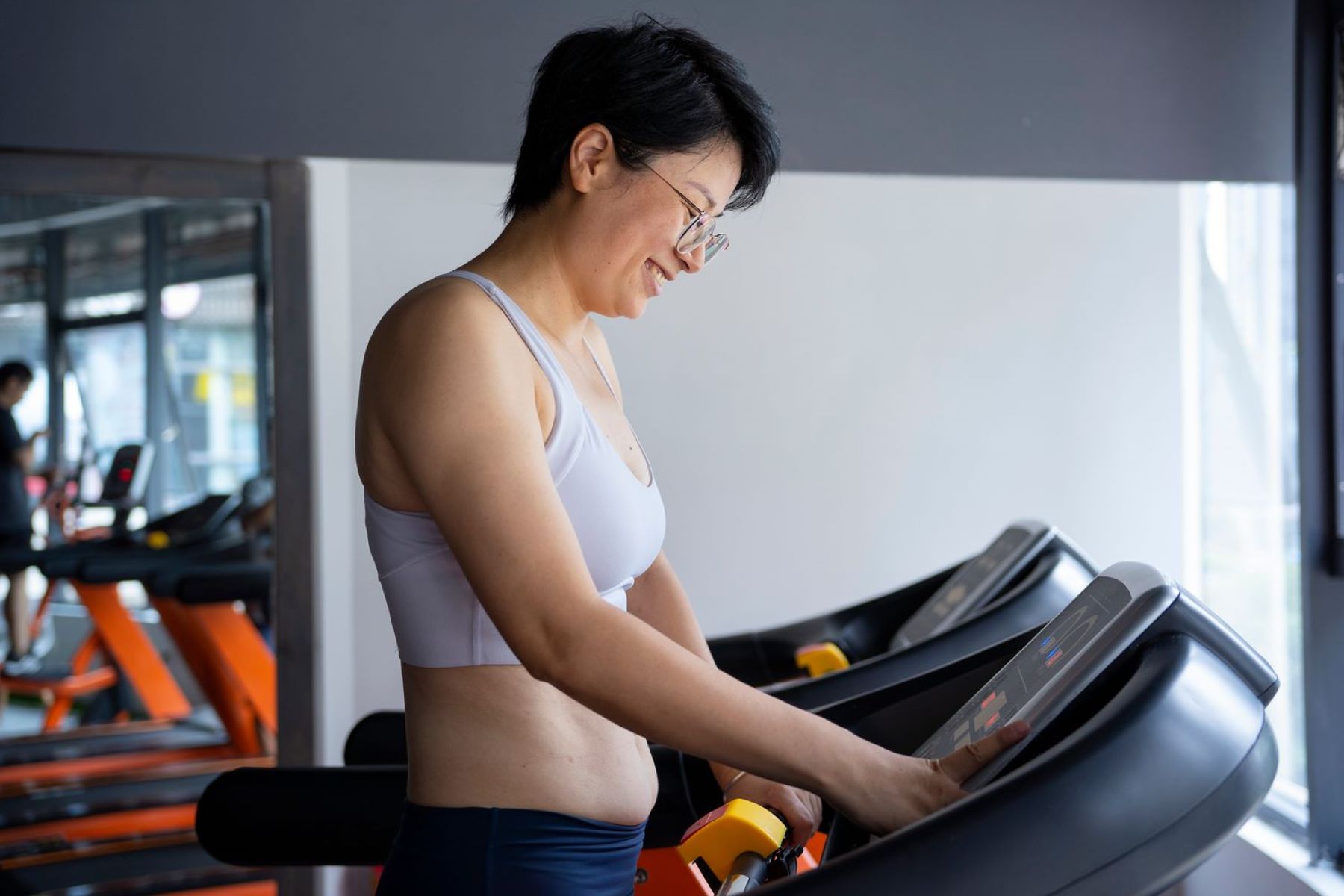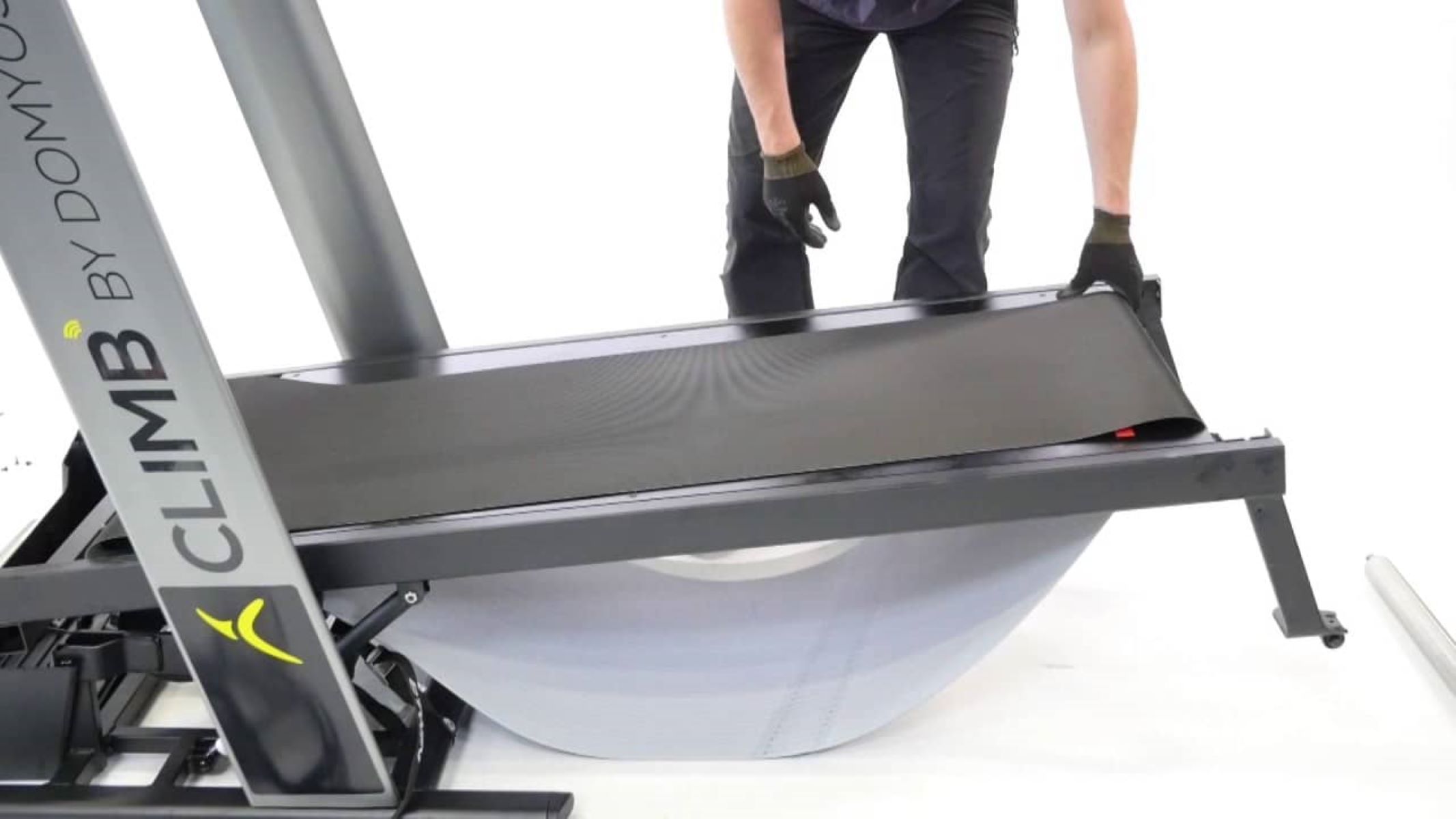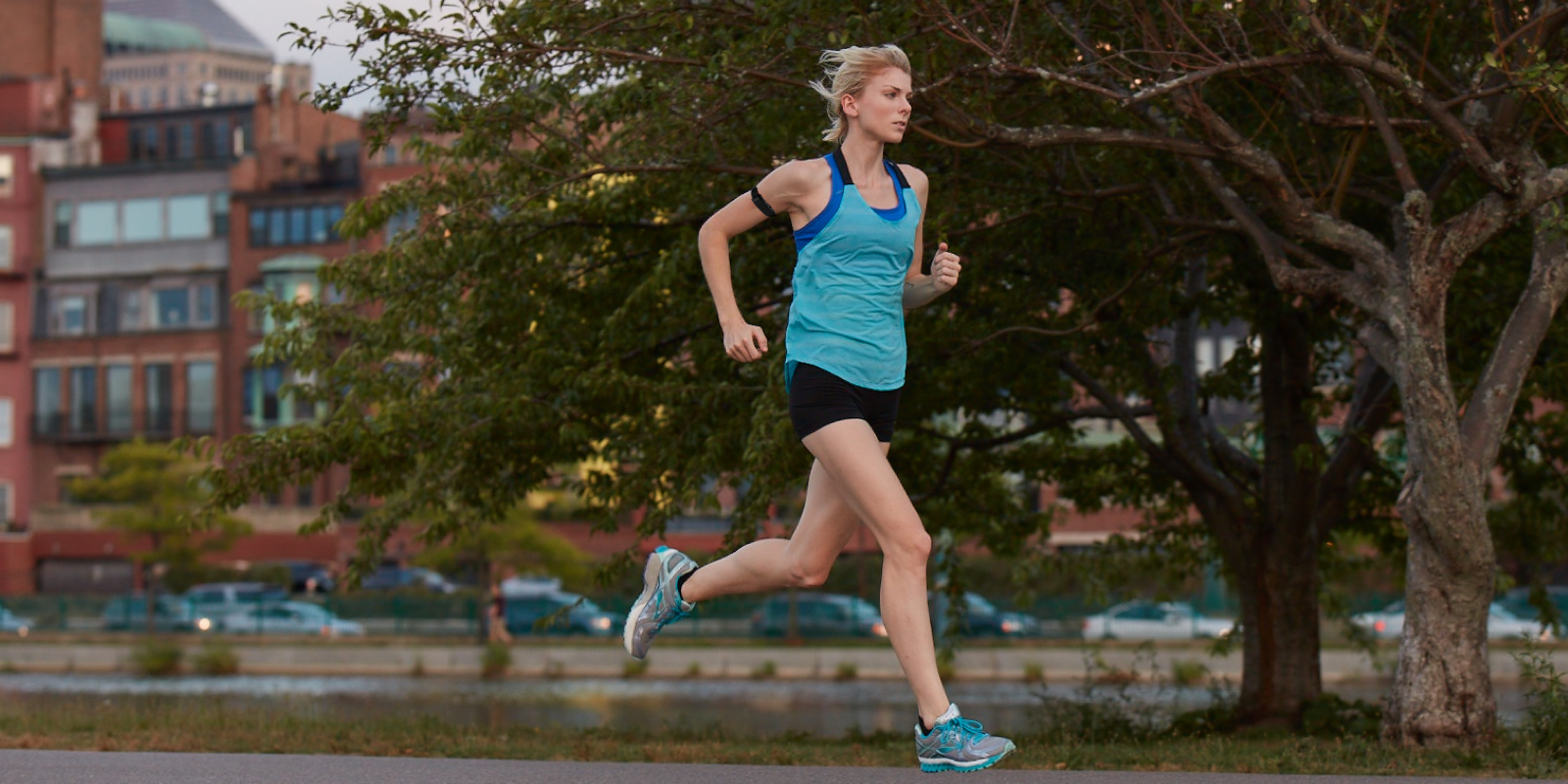Home>Misc>Featured>How Much Exercise Does An 80-Year-Old Need


Featured
How Much Exercise Does An 80-Year-Old Need
Published: October 7, 2023
Discover the recommended amount of exercise for an 80-year-old. Featured tips and expert advice to maintain a healthy and active lifestyle.
Introduction
As we age, it becomes even more crucial to prioritize our physical health and well-being. Regular exercise plays a vital role in maintaining and improving overall health, especially for older adults. In this article, we will explore the importance of exercise for 80-year-olds and discuss the general guidelines, benefits, and types of exercises suitable for this age group.
Exercise is not just for the young – it is equally essential for seniors to stay active and engaged. Engaging in physical activity can help 80-year-olds maintain their strength, flexibility, and independence as they navigate the challenges that come with aging.
While it’s natural for our bodies to experience certain limitations as we grow older, incorporating exercise into our daily routine can mitigate the effects of aging and enhance our overall quality of life. Whether it’s going for a leisurely walk, doing strength training exercises, or practicing yoga, finding an exercise regimen that suits one’s abilities and preferences is key.
The benefits of exercise for seniors are far-reaching. Not only does it help in maintaining a healthy weight, but it also reduces the risk of chronic diseases such as cardiovascular disease, diabetes, and osteoporosis. Exercise also contributes to better mental health, promoting cognitive function and reducing the risk of conditions such as dementia and depression.
Exercise is not only about physical fitness; it also offers social and emotional benefits. Participating in group activities or joining community fitness programs can help seniors build connections, combat isolation, and improve their overall well-being.
In the following sections, we will delve deeper into the specific guidelines, types of exercises, and frequency of physical activity recommended for 80-year-olds. We will also address safety considerations and how to tailor exercises to individual needs and abilities. By the end of this article, readers will have a comprehensive understanding of how much exercise is needed and how to incorporate it effectively into the lives of 80-year-olds.
Importance of Exercise for Seniors
Regular exercise is of utmost importance for seniors, as it offers a wide range of physical, mental, and emotional benefits. Engaging in physical activity can help older adults maintain their independence, improve their overall well-being, and enjoy a better quality of life.
One of the primary reasons why exercise is crucial for seniors is that it helps in maintaining and improving physical strength and flexibility. As we age, our muscles tend to weaken, and our joints become stiffer, making daily activities more challenging. Regular exercise can help combat these effects by strengthening muscles, improving flexibility, and maintaining joint mobility.
Furthermore, exercise plays a significant role in managing weight and preventing obesity, which is a common health concern among seniors. By engaging in activities that burn calories, seniors can maintain a healthy weight, reduce the risk of chronic diseases, such as diabetes and cardiovascular disease, and improve overall cardiovascular health.
The benefits of exercise for seniors extend beyond the physical realm. Regular physical activity has been shown to improve cognitive function and reduce the risk of cognitive decline and conditions such as dementia. Exercise increases blood flow to the brain, promotes the growth of new neurons, and enhances memory and mental acuity.
Maintaining good mental health is another critical aspect of overall well-being for seniors. Exercise helps in releasing endorphins, also known as the “feel-good” hormones, which can reduce feelings of anxiety, stress, and depression. Engaging in regular physical activity also provides an opportunity for social interaction and connection, which is vital for combating social isolation and improving mental well-being.
In addition to these benefits, exercise has been proven to improve sleep quality, strengthen the immune system, and enhance bone density, reducing the risk of osteoporosis and fractures. It also helps in maintaining a healthy digestive system and reducing the risk of constipation.
Overall, the importance of exercise for seniors cannot be overstated. It is a key component of healthy aging and has a positive impact on physical, mental, and emotional well-being. By incorporating regular exercise into their daily routine, seniors can maintain their independence, enhance their overall health, and enjoy a higher quality of life.
General Guidelines for Exercise in Older Adults
When it comes to exercise, older adults need to approach it with careful considerations to ensure safety and maximize benefits. While the specific exercise routine will vary based on an individual’s health, fitness level, and personal preferences, there are some general guidelines that can help older adults stay active and healthy.
First and foremost, it’s important for older adults to consult with their healthcare provider before starting or making any significant changes to their exercise routine. This is especially crucial for individuals with pre-existing health conditions or who may be at higher risk for certain injuries or complications.
Once the green light is given by the healthcare provider, it’s recommended for older adults to engage in a combination of cardiovascular exercise, strength training, and flexibility exercises. This combination helps to optimize overall health and fitness.
Cardiovascular exercise, such as brisk walking, swimming, cycling, or low-impact aerobics, helps to improve heart health, boost endurance, and maintain a healthy weight. Older adults should aim for at least 150 minutes of moderate-intensity aerobic activity or 75 minutes of vigorous-intensity aerobic activity per week, spread out over several days.
Strength training exercises are important for maintaining and building muscle mass, which helps to support joint health, improve balance, and prevent age-related muscle loss. Older adults should aim for strength training activities at least twice a week, targeting all major muscle groups. This can be done using resistance bands, free weights, or weight machines, depending on individual capabilities and preferences.
Flexibility exercises, such as stretching or yoga, are essential for maintaining joint mobility and preventing stiffness and discomfort. These exercises should ideally be performed daily, focusing on all major muscle groups. It’s important to warm up before stretching and avoid bouncing or pushing too hard to prevent injury.
In addition to these exercise components, older adults should also prioritize balance and stability exercises to reduce the risk of falls, which can lead to severe injuries. This can include activities such as tai chi or specific balance exercises recommended by a healthcare professional.
It’s important to start any new exercise routine slowly and gradually increase intensity and duration over time. Listening to the body and giving it time to adapt is key to preventing injuries and ensuring long-term adherence to exercise habits.
Lastly, staying adequately hydrated, wearing appropriate clothing and footwear, and listening to the body’s cues are essential during exercise. If any unusual pain or discomfort arises during exercise, it’s important to stop and consult a healthcare professional.
By following these general guidelines, older adults can engage in safe and effective exercise routines that promote overall health, well-being, and independence.
Benefits of Exercise for 80-Year-Olds
Regular exercise is incredibly beneficial for 80-year-olds, as it promotes physical, mental, and emotional well-being. Engaging in regular physical activity can significantly enhance the overall quality of life for older adults in this age group.
One of the main benefits of exercise for 80-year-olds is the maintenance of physical strength and mobility. As we age, our muscle mass tends to decline, making daily activities more challenging. Regular exercise, particularly strength training, helps to maintain muscle mass, improve balance, and enhance overall physical strength. This, in turn, reduces the risk of falls and injuries, allowing 80-year-olds to maintain their independence for longer.
Exercise also plays a crucial role in improving cardiovascular health. Engaging in activities such as brisk walking, swimming, or cycling helps to strengthen the heart and improve circulation. This leads to a reduced risk of cardiovascular diseases such as heart disease, stroke, and high blood pressure.
Maintaining a healthy weight is another benefit of exercise for 80-year-olds. Regular physical activity helps to manage weight by burning calories and increasing metabolism. This is important as excess weight can put strain on joints and organs, leading to a higher risk of various health conditions.
Exercise has also been shown to have a positive impact on mental health. Physical activity stimulates the release of endorphins, the body’s natural feel-good hormones, which improve mood and reduce symptoms of anxiety and depression. Regular exercise can also help to improve sleep patterns, reduce stress levels, and enhance overall cognitive function.
Beyond the physical and mental benefits, exercise provides an opportunity for social engagement and connection. Many 80-year-olds find themselves at risk of social isolation, which can have detrimental effects on their overall well-being. Participating in group exercise classes or community activities not only provides the physical benefits of exercise but also allows for social interaction, boosting mental and emotional well-being.
In addition to these benefits, exercise has also been linked to improved bone density and reduced risk of osteoporosis, as weight-bearing exercises help strengthen bones. It can also improve digestion and reduce the risk of constipation, which can be common issues for seniors.
Overall, the benefits of exercise for 80-year-olds are numerous and significant. Regular physical activity can help maintain physical strength, improve cardiovascular health, enhance mental well-being, and provide social connection. By incorporating exercise into their daily lives, 80-year-olds can enhance their overall quality of life and age with grace and vitality.
Types of Exercise Suitable for 80-Year-Olds
When it comes to exercise for 80-year-olds, it’s important to choose activities that are safe, enjoyable, and cater to their specific needs and abilities. While individual preferences and physical conditions may vary, there are several types of exercise that are generally considered suitable for older adults in this age group.
1. Walking: Walking is a low-impact and accessible exercise that can easily be incorporated into the daily routine. It helps to improve cardiovascular health, strengthen leg muscles, and maintain joint flexibility. Whether it’s walking in the neighborhood, on a treadmill, or in a park, this activity provides an opportunity for physical activity while enjoying the surrounding environment.
2. Swimming: Swimming and water-based exercises are ideal for 80-year-olds as they are gentle on the joints and offer resistance that helps to build strength. Swimming provides a full-body workout while also improving cardiovascular endurance. Water aerobics or aqua fitness classes are also great options for older adults looking for a low-impact workout.
3. Strength Training: Building and maintaining muscle strength is crucial for older adults, as it helps to support joint health and overall functionality. Strength training exercises can be performed using resistance bands, dumbbells, or weight machines. It’s important to start with light weights and gradually increase as strength improves. Targeting major muscle groups with exercises like squats, lunges, chest presses, and bicep curls can help improve overall strength and stability.
4. Yoga or Tai Chi: These mind-body exercises focus on flexibility, balance, and relaxation. They provide a gentle way to improve flexibility, joint mobility, and overall body awareness. Yoga and Tai Chi also incorporate deep breathing and meditation techniques, offering additional benefits for stress reduction and mental well-being.
5. Low-Impact Aerobics: These group exercise classes are designed specifically for older adults and offer a fun and social way to improve cardiovascular health. Low-impact aerobics involve movements that minimize stress on the joints, making them suitable for individuals with joint pain or limited mobility. These classes typically include a mixture of cardio, strength, and flexibility exercises.
6. Cycling: Cycling on a stationary bike or even outdoor biking can be a great way to improve cardiovascular fitness without putting excessive stress on the joints. It’s important to choose a suitable intensity and adjust the resistance accordingly. Cycling allows for individual control of pace and intensity, making it suitable for a wide range of fitness levels.
It’s essential for 80-year-olds to listen to their bodies and choose activities that they enjoy and can comfortably perform. It’s also important to start slowly, gradually increase intensity and duration, and seek guidance from a healthcare professional or certified fitness trainer if needed.
Remember, the goal is to find exercises that improve physical fitness, maintain functional abilities, and enhance overall well-being. By incorporating a variety of exercises that target different aspects of fitness, 80-year-olds can enjoy the benefits of a well-rounded exercise routine.
How Often Should an 80-Year-Old Exercise?
When it comes to exercise frequency, it’s important for 80-year-olds to strike a balance between staying active and allowing the body enough time to rest and recover. The American Heart Association and other reputable health organizations recommend that older adults engage in at least 150 minutes of moderate-intensity aerobic activity or 75 minutes of vigorous-intensity aerobic activity every week.
This recommendation translates to about 30 minutes of exercise on most days of the week. However, it’s important to note that this is a general guideline, and individual preferences and physical abilities should be taken into account. Some individuals may find it more manageable to divide their exercise into shorter bouts throughout the day, while others may prefer longer sessions. The key is to find a routine that is sustainable and enjoyable.
In addition to the recommended aerobic activity, it is also crucial for 80-year-olds to incorporate strength training exercises at least two days per week. Strength training helps to build and maintain muscle mass, which is important for maintaining strength, balance, and overall functionality. It’s important to include exercises that target all major muscle groups, such as leg presses, chest presses, shoulder raises, and bicep curls.
It’s worth noting that the exercise routine should also allow for rest days in between. Rest days give the body time to recover and rebuild, preventing overuse injuries and excessive fatigue. On rest days, engaging in gentle stretching or relaxing activities like yoga or tai chi can be beneficial, as they provide a form of active recovery without placing excessive stress on the body.
It’s always best to listen to the body and adjust the exercise frequency accordingly. If an 80-year-old is just starting an exercise routine or has pre-existing health conditions, it may be necessary to start with lower intensity and gradually increase the frequency and duration as fitness levels improve. Consulting with a healthcare provider or a certified fitness professional can provide valuable guidance in developing an appropriate exercise plan.
Remember that the goal is to maintain regular physical activity while respecting the body’s capabilities and limitations. The ultimate aim is not to overexert oneself, but rather to achieve a balanced and sustainable exercise routine that supports overall health, mobility, and well-being.
Duration and Intensity of Exercise for 80-Year-Olds
When it comes to exercise duration and intensity for 80-year-olds, it’s important to consider individual capabilities, overall health, and fitness level. The key is to find a balance that promotes cardiovascular health, builds strength, and maintains mobility without pushing the body beyond its limits.
In terms of duration, the American Heart Association recommends that older adults aim for at least 150 minutes of moderate-intensity aerobic activity or 75 minutes of vigorous-intensity aerobic activity per week. This can be spread out over several days, and ideally, individuals should aim for about 30 minutes of exercise on most days of the week.
For moderate-intensity aerobic activity, individuals should aim to work at a level where they can still carry on a conversation but feel slightly out of breath. Examples of moderate-intensity exercises include brisk walking, water aerobics, or cycling on level ground. On the other hand, for vigorous-intensity aerobic activity, individuals should work at a level where they can only say a few words at a time without gasping for breath. Examples of vigorous-intensity exercises include jogging, swimming laps, or aerobic dance classes.
It’s important to note that these recommendations can be adjusted based on an individual’s fitness level. If starting a new exercise routine or if there are concerns about certain health conditions, it may be necessary to start with lower intensity and gradually increase the duration and intensity over time. Listening to the body and finding a pace that feels challenging yet sustainable is key.
In addition to aerobic activity, strength training should be included at least two days per week. The duration of strength training sessions will depend on the specific exercises performed and the number of sets and repetitions completed. It’s important to allow for adequate rest periods between sets and to focus on proper form and technique to maximize benefits and minimize the risk of injury.
As for intensity during strength training, older adults should aim to work at a level where they feel fatigue and muscle burn by the end of each set. It’s important to start with lighter weights or resistance bands and gradually increase the intensity as strength improves. Seeking guidance from a certified fitness professional can be beneficial in designing a safe and effective strength training program.
Last but not least, it’s important for 80-year-olds to prioritize safety during exercise. This includes warming up before each session, wearing appropriate footwear and clothing, staying well-hydrated, and paying attention to any signs of excessive fatigue, pain, or discomfort. If any concerning symptoms arise during exercise, it’s important to stop and consult a healthcare professional.
By finding the right combination of duration and intensity that suits individual capabilities, 80-year-olds can enjoy the benefits of exercise while minimizing the risk of injury or overexertion. Regular physical activity at an appropriate intensity level can lead to improved cardiovascular health, increased strength, enhanced mobility, and an overall improved quality of life.
Precautions and Safety Considerations
When engaging in exercise, especially as an 80-year-old, it’s important to prioritize safety and take certain precautions to minimize the risk of injury and ensure a positive exercise experience. Here are some key safety considerations to keep in mind:
1. Consult with a Healthcare Provider: Before starting any exercise program, it is advisable to consult with a healthcare provider, especially if you have any pre-existing health conditions or concerns. They can provide personalized recommendations and ensure that there are no contraindications or specific precautions to be taken.
2. Warm-up and Cool-down: Prior to starting any exercise session, it’s essential to perform a proper warm-up to prepare the body for activity. This can include gentle movements that target the muscles and joints involved in the upcoming exercises. Similarly, incorporating a cool-down at the end of the session, which includes stretching exercises, can help the body return to a resting state gradually.
3. Start Slowly: If you’re new to exercise or returning after a long period of inactivity, it’s crucial to start with low-impact and low-intensity exercises. Slowly build up the duration and intensity of your workouts over time to allow your body to adjust and adapt to the demands of exercise. Pushing too hard too soon can increase the risk of injury and lead to burnout.
4. Listen to Your Body: Pay attention to how your body feels during exercise. It’s normal to experience some muscle fatigue and increased heart rate, but if you feel any sharp or intense pain, dizziness, or shortness of breath, stop exercising and seek medical attention if needed. Pushing through pain or discomfort can lead to further injury.
5. Hydration and Nutrition: Stay hydrated by drinking water before, during, and after exercising. Replenish electrolytes if engaging in prolonged or intense workouts. Additionally, maintain a balanced diet that provides the necessary nutrients to support your body’s needs for physical activity.
6. Use Proper Technique and Equipment: Learn and practice proper exercise techniques to ensure safety and effectiveness. If using exercise equipment, ensure it is in good working condition and properly adjusted to your body. Use supportive footwear and clothing appropriate for the activity to reduce the risk of falls or discomfort.
7. Modify Exercises as Needed: Do not hesitate to modify exercises to suit your individual abilities and limitations. If certain movements or exercises are causing pain or discomfort, find alternative exercises or adjust the range of motion accordingly. Adapting exercises to your needs can reduce the risk of injury and enhance the overall exercise experience.
8. Pace Yourself and Rest: It’s important to find a balance between challenging yourself and allowing your body ample time to rest and recover. Avoid overexertion and incorporate rest days into your exercise routine. Rest and recovery are essential for muscle repair and overall well-being.
Remember, safety should always be a top priority during exercise. By following these precautions and safety considerations, you can enjoy the numerous benefits of regular physical activity while minimizing the risk of injury and optimizing your exercise experience.
Tailoring Exercises to Individual Needs and Abilities
When it comes to exercise, one size does not fit all, especially for 80-year-olds. Each individual has unique needs, abilities, and limitations. It is important to tailor exercises to their specific circumstances to ensure a safe and effective workout. Here are some key considerations for tailoring exercises to individual needs and abilities:
1. Health and Medical Conditions: Take into account any existing health conditions, such as arthritis, heart disease, or osteoporosis, when selecting exercises. Consult with a healthcare provider to understand any specific restrictions or modifications that may be necessary. This will help you choose activities that are suitable for your individual circumstances.
2. Flexibility and Mobility: Older adults may have reduced flexibility and mobility due to age-related changes or pre-existing conditions. Modify exercises to accommodate these limitations. For example, if traditional squats are challenging, try squatting onto a stable chair or using a stability ball for support. Focus on improving range of motion through regular stretching or yoga exercises.
3. Strength and Balance: It is essential to prioritize exercises that improve strength and balance. Include exercises that target the major muscle groups to maintain muscle mass and prevent age-related muscle loss. Incorporate balance exercises, such as standing on one leg or heel-to-toe walks, to improve stability and reduce the risk of falls. Use support, such as a chair or wall, if needed.
4. Individual Fitness Level: Adapt the intensity and duration of exercises based on your fitness level. If you are new to exercise, start with low-impact activities and gradually increase intensity and duration over time. If you have been consistently active, challenge yourself with higher intensity workouts or more advanced exercise progressions, as long as it is within your comfort level.
5. Joint Health: Select exercises that are gentle on the joints, especially if you have joint pain or arthritis. Low-impact activities like swimming, water aerobics, or cycling are easier on the joints compared to high-impact exercises like running or jumping. Consider using equipment like resistance bands, which provide resistance without excessive stress on the joints.
6. Personal Preferences and Enjoyment: Choose exercises that you enjoy and find motivating. This will increase adherence to your exercise routine. Engaging in activities that you look forward to, whether it’s dancing, gardening, or playing a sport, will make your exercise sessions more enjoyable and sustainable in the long run.
7. Modify and Progress Wisely: Don’t be afraid to modify exercises to suit your needs and abilities. If a certain movement is too challenging or causes discomfort, find a safer alternative or adjust the range of motion. As you build strength and improve fitness, gradually increase the intensity or difficulty of exercises, but always within your capabilities.
Remember, the goal is to find exercises that are safe, enjoyable, and sustainable for your individual needs and abilities. Tailoring exercises to your circumstances will ensure that you can reap the maximum benefits of physical activity while minimizing the risk of injury. Listening to your body and seeking guidance from healthcare professionals or certified fitness trainers can provide valuable insights and support in tailoring an exercise program that is right for you.
Recommended Exercises for 80-Year-Olds
When it comes to exercise for 80-year-olds, there are several activities that are particularly beneficial for overall health, strength, balance, and mobility. These exercises can be incorporated into a well-rounded exercise routine to help maintain independence and enhance quality of life. Here are some recommended exercises for 80-year-olds:
1. Walking: Walking is a simple and accessible exercise that can be tailored to individual fitness levels. It helps improve cardiovascular health, maintain joint mobility, and strengthen leg muscles. Start with shorter distances and gradually increase as endurance improves. Consider walking outdoors in nature or joining a walking group to make it more enjoyable.
2. Strength Training: Incorporating strength training exercises at least twice a week is crucial for 80-year-olds. Use resistance bands, light dumbbells, or weight machines to target major muscle groups. Squats, lunges, chest presses, shoulder raises, and bicep curls are examples of effective exercises that can be done with proper form and appropriate resistance. Focus on maintaining good posture and breathing throughout each exercise.
3. Yoga or Tai Chi: These gentle, low-impact exercises are beneficial for improving flexibility, balance, and overall body awareness. Yoga and tai chi involve slow and controlled movements, along with deep breathing techniques that promote relaxation and mindfulness. Look for classes specifically designed for seniors or follow instructional videos that cater to older adults’ needs and abilities.
4. Water Aerobics: Water-based exercises are ideal for those with joint pain or limited mobility. Water provides buoyancy and reduces stress on the joints, making it easier to move and exercise without discomfort. Water aerobics classes or swimming laps in a pool can help improve cardiovascular fitness, strength, and flexibility.
5. Balance Exercises: Improving balance is important for preventing falls and maintaining functionality. Exercises like standing on one leg, heel-to-toe walks, or the “flamingo” stance (standing on one leg with arms out to the side) can help improve stability. Use a wall or chair for support as needed and gradually increase the difficulty as balance improves.
6. Cycling: Cycling on a stationary bike or outdoors can be an excellent low-impact cardiovascular exercise. Adjust the intensity and resistance to your comfort level and gradually increase over time. Cycling helps improve leg strength, joint flexibility, and overall fitness. Consider using a recumbent bike if balance is a concern.
7. Flexibility and Stretching: Make time for gentle stretching exercises to improve flexibility and joint mobility. Focus on major muscle groups, such as the shoulders, hips, and legs. Incorporate stretches into your daily routine, paying attention to proper form and avoiding any movements that cause discomfort or pain.
Remember, it’s important to start slowly, listening to your body and gradually increasing the intensity or duration of exercises. Modify exercises as needed and seek guidance from certified fitness professionals if necessary. It is always advisable to consult with a healthcare provider before starting a new exercise routine, especially if you have any underlying health conditions.
By incorporating a combination of these recommended exercises into your routine, you can improve cardiovascular health, maintain strength and flexibility, enhance balance, and enjoy a higher quality of life as an 80-year-old.
Conclusion
Regular exercise is of utmost importance for 80-year-olds to maintain their physical and mental well-being. Engaging in appropriate physical activity helps maintain muscle strength, improve cardiovascular health, enhance flexibility, and promote overall functionality. It also plays a crucial role in supporting cognitive function, mental health, and social connection.
By following the general guidelines for exercise in older adults, including a combination of cardiovascular exercise, strength training, flexibility exercises, and balance activities, 80-year-olds can enjoy numerous benefits. Walking, swimming, strength training, yoga, water aerobics, cycling, and balance exercises are recommended activities for this age group. Tailoring exercise routines based on individual needs and abilities is crucial to ensure safety and maximize effectiveness.
It’s important to remember that exercise should be approached with caution and after consulting with a healthcare provider. Starting slowly, listening to the body, and gradually increasing intensity or duration is key to avoiding injuries and enjoying a sustainable exercise routine. Safety considerations, such as warm-up and cool-down, proper technique, hydration, and rest, should not be overlooked.
By embracing regular exercise and incorporating recommended activities into their daily lives, 80-year-olds can maintain their independence, enhance their physical and mental health, and improve their overall quality of life. Remember, it’s never too late to start or continue exercising. The benefits are substantial, and embracing an active lifestyle can lead to a fulfilling and vibrant journey through the golden years.






